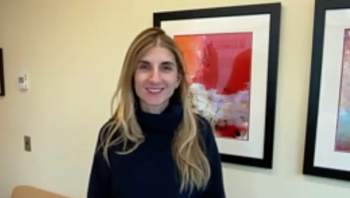
Artificial Intelligence May Expedite Prognoses in Cancer Care
In considering patients’ busy lives, AI may help reduce the number of visits required to fully stage and grade cancers.
CancerNetwork® spoke with Ketan K. Badani, MD, vice chairman of Urology and Robotics and director of the Comprehensive Kidney Cancer Center and Reconstructive Urology at Mount Sinai Health System, about how he expects artificial intelligence (AI) to become a standard of care in 5 years.
Badani prefaced the discussion by acknowledging fears associated with the emergence of AI before suggesting that it creates the potential for opportunities in enhancing cancer care. He then explained that AI may help profile cancer based on images done in an office. To that end, Badani expressed that an AI image could extrapolate information through image dissection, such as cancer grade and type, while collecting granular details by identifying high-risk features or probability of metastasis.
Furthermore, he acknowledged that patients lead busy lives, suggesting that they may find it difficult to undergo multiple visits after various referrals. He explained that the ability of AI to extrapolate relevant information regarding a patient’s cancer from a single image may help prevent the need for patients to travel to multiple sites across numerous visits. In harnessing this technology, Badani explained that a single image sent to AI can provide the primary care physician with all the information they need to diagnosis the patient and discuss options for treatment.
Transcript:
One of the fears that everyone has about AI is it takes over people’s work and viability. Maybe that is true to some degree, but it creates [other] opportunities...I believe that one of the most important things AI is going to do in the future—maybe in 5 years—is allow us to take a piece of information––and I am going to give you an example of what we talked about earlier: a picture of a kidney tumor. Say it is a micro-ultrasound image of a kidney tumor that is done in the office. The urologist has put their hand on the back with the wand of the ultrasound, taken a picture, and uploaded it into the AI system. The AI system will take that image, completely dissect it, put it back together, and tell you this is a grade 2 clear cell renal cell carcinoma without any significant advanced or high-risk features, the probability of this patient metastasizing in the next 5 years is 2.3%, et cetera, just from a single snapshot. That is what AI can do for us.
Now, the patient is in a doctor’s office. The patient has a busy life. They have to go to work or take care of their kids...[but] they are in the office. They do not have to then be referred for the scan, get referred to a urologist, and have that urologist refer them to a surgical urologist. That patient gets a one-time picture sent to AI, and the physician in front of that patient can say, “Here we go, this is what we have.” You have streamlined and improved the care exponentially. That is where I see AI going.
Newsletter
Stay up to date on recent advances in the multidisciplinary approach to cancer.
































































































